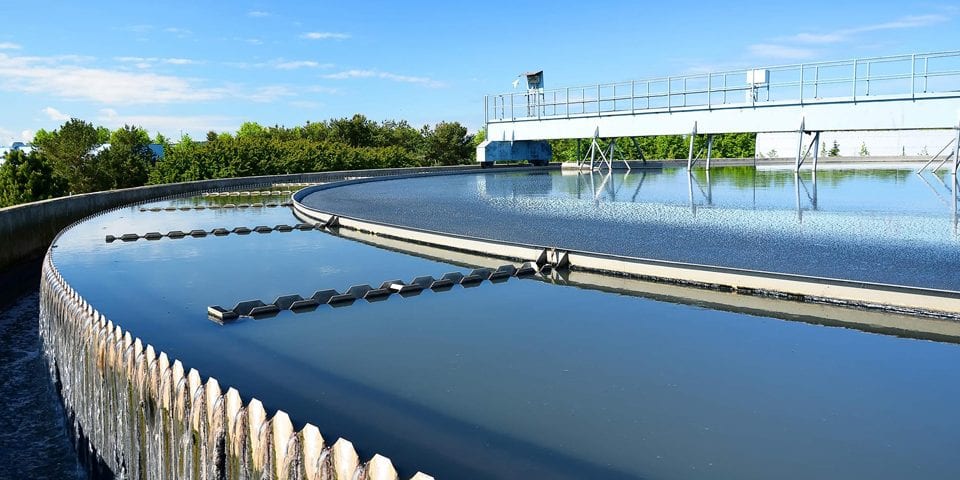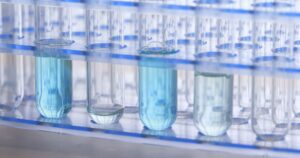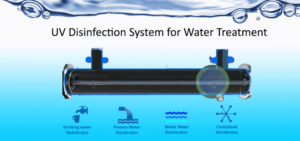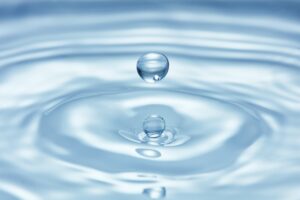Microorganism control is the primary reason for using ultraviolet and recirculation in purified water systems. Minimizing microorganism levels in purified water systems involves two related concepts: Prevention and Control. To produce a sterile environment, specific efforts must be carried out, or organisms will be present.
Ultraviolet Radiation
UV (254 nm) acts as a barrier to living organisms carried by a moving stream of water. It does not affect microorganisms attached to piping upstream or downstream of the UV unit. It has been theorized that for every microorganism floating in the water (killed by UV) there are 10,000 on the surface of the piping (unaffected by UV). At the very point of use 254 nm UV can produce a sterile product (Picotech, Picopure). However, it is more difficult to determine what 245 nm UV achieves “in-line”. Exposure to high intensity 185 nm, over a period, will break down endotoxin and other microorganism by-products, and reduce TOC levels.
Recirculation
Recirculation, as part of a synergistic design, promotes lowered microorganism counts. A synergistic design is a system design where the combined action of 2 or more pieces of equipment achieves an even greater effect than that of which each piece of equipment is individually capable. Some of the synergistic pieces that make recirculation effective are: Smooth Piping and Joints make it more difficult for microorganisms to adhere to the piping and allow fewer places for microorganisms to hide. Smooth surfaces and crevice free joints allow disinfectant to reach all parts of the system, so that it does a more complete job.
No Dead Legs.
A dead leg is defined as an un-recirculated section of piping longer than six times the diameter of the pipes. Dead legs create all sorts of problems in a piping system. The most common is allowing an area where microorganisms and endotoxin accumulate.
Closed Loop.
It is preferable that once highly purified water enters the distribution system, it does not meet with air again. Air re-contaminants the water with carbon dioxide and other gases.
It has been found that most bacteria do not survive and reproduce well in highly purified water. As long as the deionizers are producing water with high resistance (is ion free), CFU counts are low. Once ion breakthrough begins to occur, high CFU counts, and endotoxin levels accompany the ions. In a closed loop you maintain the microenvironment of high resistance with low CFU levels. When you return DI water to a storage tank, with higher nutrient RO water, CFU counts, and endotoxin levels increase.
Storage facilities should be sealed, with incoming air being filtered through a presterilized hydrophobic 0.2 micron vent filter. Regular disinfection of the storage tank, or chlorine injection, is a good idea to keep microorganisms and their by-products from accumulating. Also, remember that opening storage tanks, sticking hands in the stored water, pulling out and replacing level controls are all potential sources for microbial contamination in storage and downstream equipment.
Summary
Application of 254 nm UV at points of use, such as a Picotech 2 or Picopure 2 systems, can produce sterile water. Continuous recirculation of purified water in a distribution system, designed without dead legs and other sources of microbial contamination, helps to provide effective control of microorganism growth. On a small scale, the Hydro 17008 pump or UV Plus Pump will perform this task.




